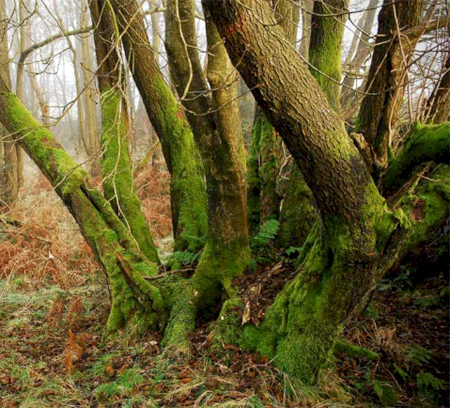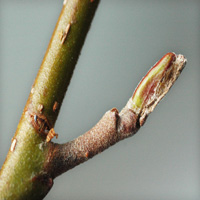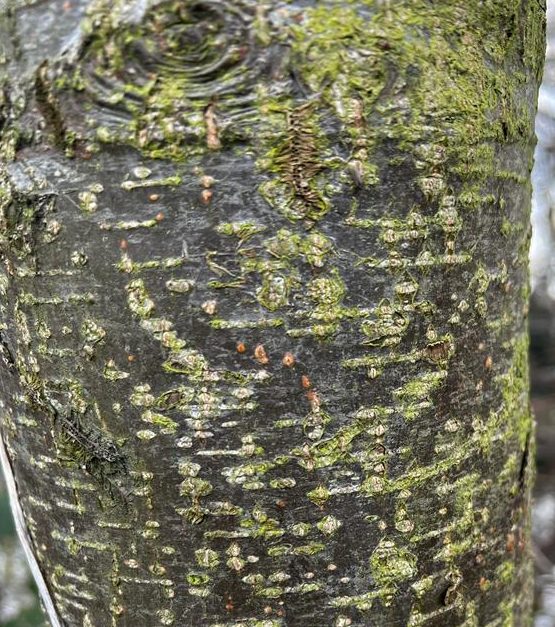Alder
Alder (Alnus glutinosa) belongs to the same family (the Betulaceae) as Birch, hornbeam and hazel. It rarely grows to more than 20 metres (but may reach 30M). It grows quickly and is short lived, with a life span of some 60 years. It is a typical pioneer species and can colonise bare ground. Alder has the ability to ‘fix nitrogen’ because of its association with the bacterium Frankia alni. The bacteria are present in nodules on the roots, they convert gaseous nitrogen into ammonia and other nitrogen compounds which the tree can use. Consequently, alder can grow in nutrient-poor soils where few other trees thrive.
It is found across most of Europe, into Russia; also the Caucasus, Turkey and Iran. It is typically found in wet areas and alongside streams and rivers. Wet woodland is sometimes referred to as alder carr. Alders may be used in flood mitigation schemes.
Leaf
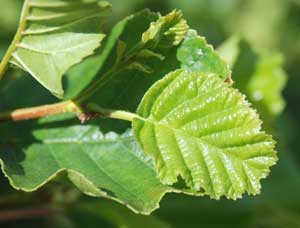
The leaves are rounded but tapering towards the leaf stalk. Some describe the leaf as being pear-shaped. The margin is toothed, but there are fewer teeth towards the leaf stalk / petiole. The veins are almost ‘sunken’ into their surrounding leaf tissue, and each leaf may have 6 to 8 pairs of veins. The apex of the leaf is quite rounded, almost ‘blunted’. The leaves tend to remain on the trees until quite late in the year.
Buds, Bark & Stem
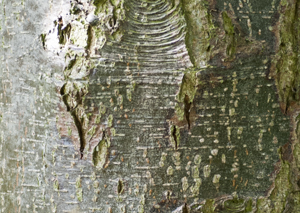
As the bark ages, it becomes dark grey and fissured. The adjacent image shows some older bark; the image below shows younger bark with an olive green colour, and very noticeable lenticels (gas exchange structures).
Wood (from coppiced trees) is durable if kept wet and its ability to withstand rotting in water meant that it was useful (historically) in making water pipes / sluice gates etc. The wood was also used for clog making and is said to be good for charcoal making.
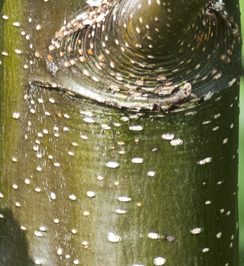
Young alder bark with noticeable lenticels
Flowers and Fruits
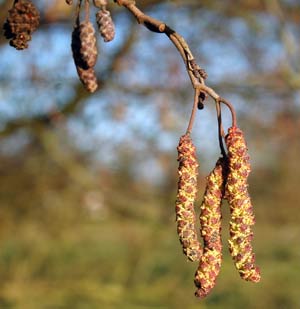
Alder produces both male and female flowers on the same tree, that is monoecious. The male flowers or catkins are a dark yellow brown colour, about 2 inches long when open. The female flowers are much smaller in size, cone-shaped and red. When fertilised, these become green fruits, which gradually become woody and brown. Eventually they will release small, reddish brown seeds. The empty cones may remain on the tree until the following Spring.
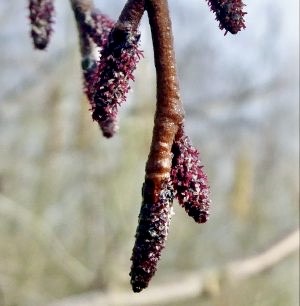
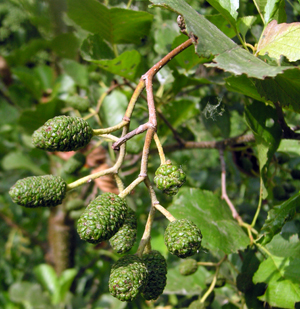
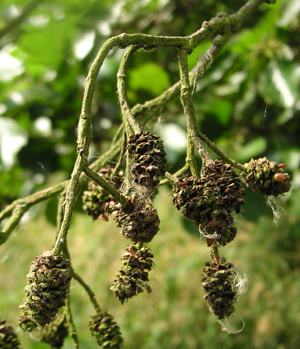
Alder gallery
